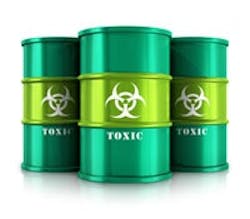Nearly every plant produces waste that must be disposed without affecting other facilities and the environment. Removing and disposing of these materials can be costly. Excessive waste also is a symptom of process inefficiencies.
At many chemical processing plants, disposal is all the more important due to the toxic and hazardous waste generated. Carbon monoxide (CO) is one of the most toxic process waste gases, but its heating value makes it a valuable lean fuel. Despite this, CO’s wider explosive range makes it risky to handle; hence, some plants prefer to flare it directly. However, petrochemical plants and integrated steel mills with blast furnaces and oxygen-blown steel converters have developed safer technologies to recover the CO, clean it and distribute it as regular fuel gas to users.
Many industrial facilities that have anaerobic digesters for their waste water treatment plant flare the digester gas generated. Digester gas is another valuable lean fuel. It can be recovered easily with some additional cleaning and then burned in an existing boiler or heater. With the attractive energy-cost-reduction potential, many plants that focus on energy efficiency no longer flare process off-gases that have fuel value in them. Landfill gas, if available near a process plant, also can be utilized in the same way.
Almost all chemical processing plants operate a waste gas incinerator that routes process waste gases to a ceramic bed that’s always maintained around 1,800°F. To maintain this high temperature, the incinerator burns natural gas continuously. Recovering waste heat from the incinerator stacks is a good energy-cost-reduction opportunity because waste heat can generate the low-pressure steam or hot water many plants require.
Some plants may have to dispose off-spec liquid hydrocarbons or chemical compounds that couldn’t be sold or used in other processes. Consider analyzing such off-spec liquids for their fuel value and toxic contents. Some chemical plants have installed special burners to burn such liquids in their utility boilers, thus saving purchased fuel costs while eliminating a disposal problem. For example, thermochemical pulp mills burn in special chemical recovery boilers the large volume of black liquor that results from washing cooked cellulose materials. Many small- and medium-size pulp mills that don’t have such boilers may consider installing them either individually or collectively due to increasing energy-waste-disposal costs. The technology of black liquor firing to generate steam and recover the pulping chemicals simultaneously is well established and practiced at all large- and medium-size pulp mills. In addition, some larger pulp mills generate both electricity and steam from the black liquor-fired boilers.
Almost all the processes involved in manufacturing carbon anodes from petroleum coke offer potential to recover and recycle the off-gases at each stage of this multistage process. A process called calcination removes the volatile hydrocarbon from the raw petroleum coke (RPC) to produce calcined petroleum coke (CPC). Typically, calcination takes place in a rotary or shaft kiln under reduced atmosphere to minimize carbon loss. Hence, the off gases from the calcination would be rich in volatile hydrocarbons and CO. In the past, plants that converted RPC to CPC routed the toxic process off-gases to a waste gas incinerator. With the increase in fuel prices, it’s no longer worth wasting the fuel value of these volatile hydrocarbons and CO released from RPC. Burning the off-gases from the CPC process in a waste heat boiler generates high-pressure steam that can be routed to the plant steam system or to a condensing turbine to generate electricity.
Plants that produce carbon anodes or graphite from CPC also potentially can use the off-gases released in the process. The finely grounded CPC is blended with petroleum pitch (which serves as a binder), then molded into carbon anodes. During the baking process, substantial amounts of volatile hydrocarbons are released from the carbon anodes into the flue gas, which is partially recirculated in the baking furnace. With proper monitoring and recirculation, the external fuel burning can be halted for a good length of the baking cycle due to the burning of the released volatile hydrocarbons. Process engineers can review the condition of flue gases and readjust them to fully utilize the fuel value of the released volatile hydrocarbons.
Installing flare gas recovery units to minimize the flaring of process off-gases is another opportunity to reuse the waste gas. All process off-gases except those containing corrosive components could be recovered and reutilized.
About the Author
Ven Venkatesan
Energy Columnist
Ven Venkatesan is a former Energy Saver columnist for Chemical Processing.

